| Botanical Name |
|
| Family |
Campanulaceae - The Campanula family. |
| Pronunciation |
wall-en-BERG-ee-uh riv-yoo-LAIR-iss |
| Common Name(s) |
|
| Plant Group |
- Ground Cover A plant with a low-growing, spreading habit, grown specifically to cover the ground.
- Perennial A plant whose life cycle lasts for three or more seasons.
- Veld Flower Small veld flowers of interest, rather than for their usefulness in the garden. Some of these plants have garden potential, particularly for less formal garden situations.
|
| Plant Size |
- Medium
| Tree | 10m to 16m |
| Shrub | 1m to 2m |
| Perennial/ground cover | 40cm to 60cm |
| Bulb | 40cm to 60cm |
| Succulent | 40cm to 60cm |
|
| Position |
- Light or Dappled Shade Found below trees with sparse, open foliage. Ideal for the protection of herbaceous plants.
- Partial Shade The area is in shade for part of the day and in full sun for part of the day.
- Sun The area is in full sun for all or most of the day, all year round.
|
| General Information |
- Drought Tolerance: Moderate The plant is moderately adapted to arid conditions and can survive short periods of drought and high temperatures without extra water.
- Evergreen Plants that have leaves all year round.
- Water Moderate These plants will need some extra watering compared to water-wise plants. Plant them together, in at least some shade and in a convenient proximity to the house so that grey water can be utilised during times of drought.
- Water Wise Plant species originating from low rainfall regions that require less water to survive and thrive than other plant species.
- Wind Tolerant Plants able to withstand the effect of strong winds.
|
| Specific Information |
Wahlenbergia rivularis is a perennial with delicate looking white, cream, blue or mauve bells and crisp, softly hairy leaves. Spreading rapidly along and under the ground, it forms a soft, green ground-cover. The slender flower stems reach 30 to 40 cm above the ground, setting the flowers swaying in even the slightest breeze. In the veld I have noticed that in winter, although the plant is not clearly in evidence, it does not die off completely. After the spring rains it quickly regains its former size and charm. Plants last about 3 years but as this Wahlenbergia seeds freely, young plants will replace the old without any intervention.
A note to the Botanically Knowledgeable: Batten and Bokelman, in Wild Flowers of the Eastern Cape, state that W. Rivularis is rarely white. Other more recent sources seem to imply that this is a purely white or cream species. I have not been able to trace more authoritative information. The blue Wahlenbergia growing in the veld around Bathurst have the same creeping growth habit as that described for the white version (Plantzafrika) so I have lumped them both under the species 'rivularis'. If this assumption is erroneous please contact me with accurate information so that I can revise this plant.
|
| Ad Break |
|
| Flowers |
| Description |
five pointed petals, joined to form an open cup shape
|
| Season |
- Summer Plants will seldom bloom for the entire season as given in the list, but should flower during a period within these parameters.
|
| Colour |
|
| Growth Rate |
- Fast Specifying growth rate can be very misleading as there is considerable variation of growth rate depending on type and species of plant, available water, supplementary feeding, mulching and general care, as well as the plants suitability and adaptability to the garden environment.
- Very Fast Specifying growth rate can be very misleading as there is considerable variation of growth rate depending on type and species of plant, available water, supplementary feeding, mulching and general care, as well as the plants suitability and adaptability to the garden environment.
|
| Plant Uses |
- Attracts bees, butterflies or other insects This plant attracts insects which can be food for birds or other creatures in your garden.
- Border A strip of ground, at the edge of a driveway or path in which ornamental plants or shrubs are planted.
- Edging A low growing plant that provides softness or definition to the edges of a bed or walkway.
- Filler Either a fast growing tree or shrub used temporarily to fill in an area while the permanent plants grow to a desired size, or a plant used to fill gaps in borders or beds.
- Ground Cover Low-lying plants that spread fast, require minimal maintenance, and cover large expanses or bare areas between bulbs or shrubs. They provide protection from erosion and drought and improve the visual appearance of the garden.
- Wild Garden An indigenous garden planted for the benefit of wildlife and birds. Provides food, water, a variety of mini-biomes and no poisonous chemicals are used.
|
| Distribution and Habitat |
Mpumalanga, Eastern Free State, KwaZulu-Natal and the Eastern Cape, in grasslands
|
| Planting Suggestions |
Wahlenbergia rivularis grows in full sun or semi-shade, and is often found in moister patches in the veld. Plant in full sun, semi-shade or very light shade in well-drained soil and mulch well. Keep the young plants moist until they are well-established, then reduce frequency of water so that the plants become water wise. trim and feed with slow release 3:1:5 or organic fertilizer Wahlenbergia rivularis roots as it spreads making it easy to propagate by division, from cuttings or seed.
|
| Medicinal Uses |
In the Eastern Cape, an abscess on a mother's breast is treated with the leaves, and the unweaned baby is given an infusion of the roots.
|
| Ad Break |
|




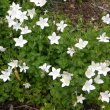
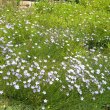
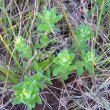
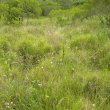
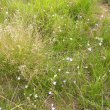
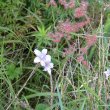


Discuss this plant
Share knowledge, ask a question or give an experience.